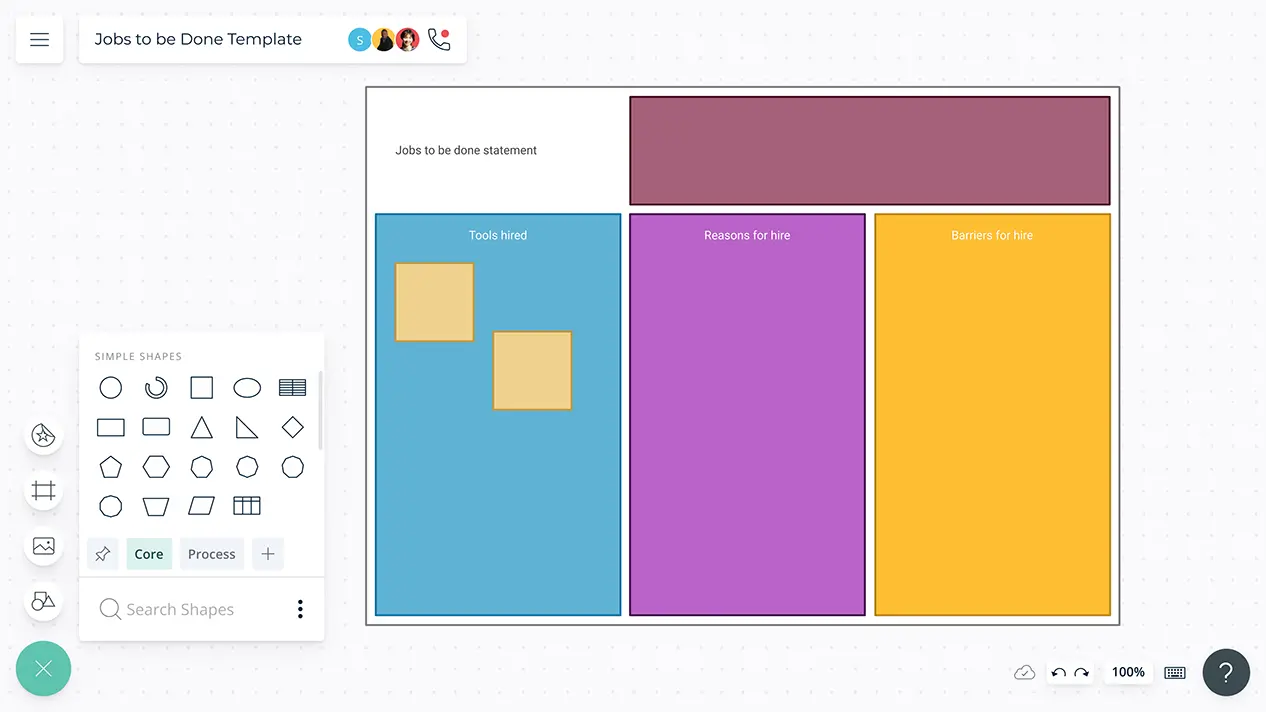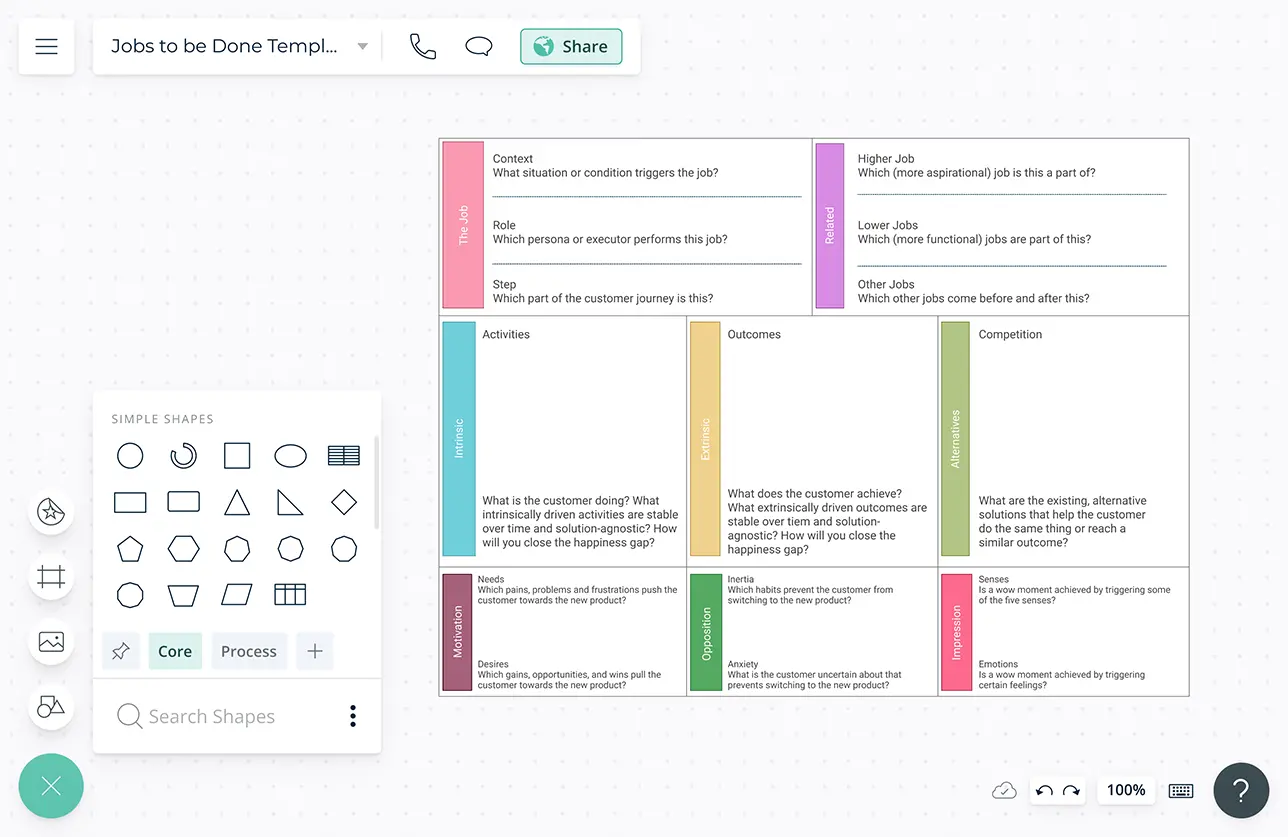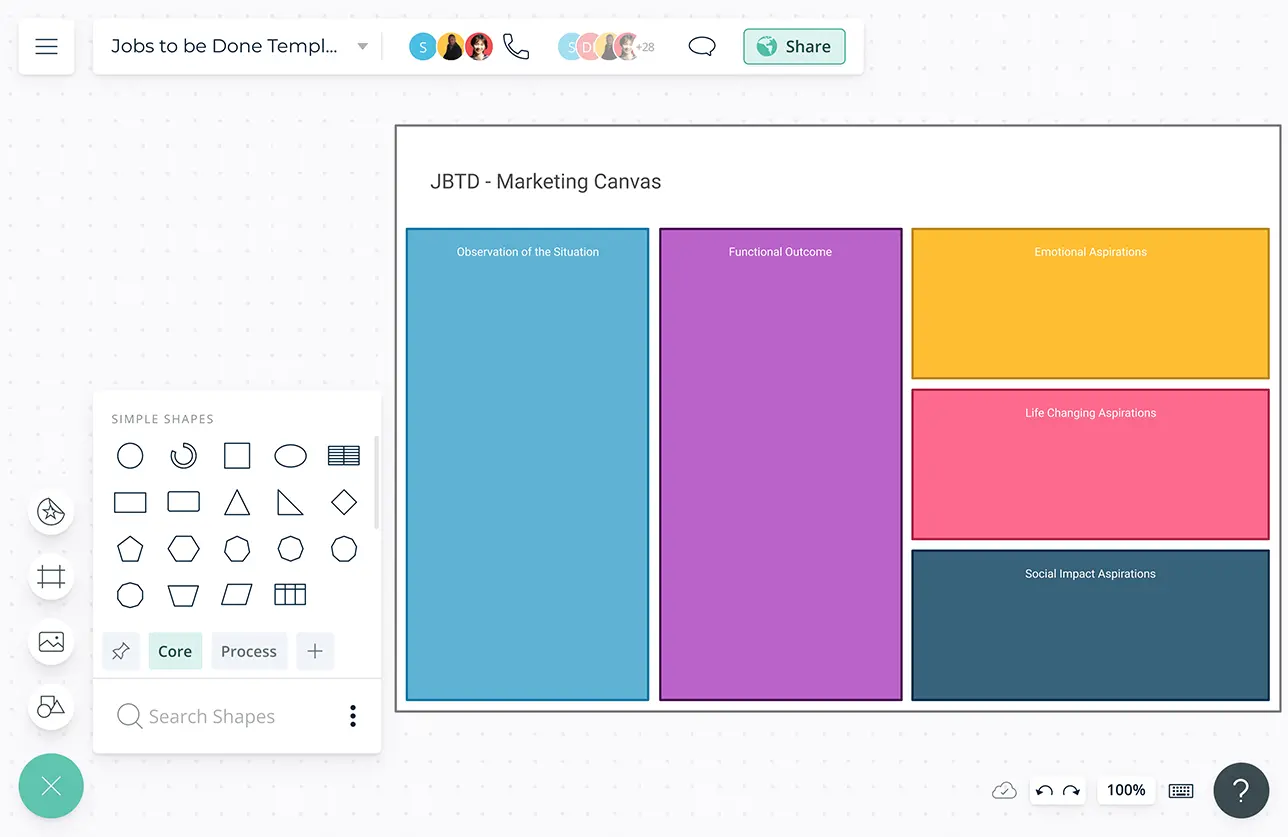Jobs To Be Done Template
Drive Innovation at Scale
Categorize, capture, and organize all your customers’ needs to create compelling customer experiences.
- Multiple premade templates to understand customer needs
- Real-time collaboration to work with teammates and stakeholders
- Infinite canvas to gather data for faster decision making

- Multiple premade templates to understand customer needs
- Real-time collaboration to work with teammates and stakeholders
- Infinite canvas to gather data for faster decision making


Easy Tools for Customer Research

Multiple templates and frameworks to better understand customer needs & customer buying behavior; jobs to be done, customer profiles, empathy maps, value proposition canvas, and more.
Bring customer interview data from any external source to visualize on the canvas as meaningful data shapes for easier analysis.
Infinite canvas to centralize and organize all communications and information around your customers.
Add detailed docs, attachments, links and more via the notes feature on each customer need to capture details and the big picture in a single space.
Built-in brainstorming tools to systematically brainstorm and conceptualize breakthrough products.
Keep Everyone and Everything in Sync

Built-in video conferencing to run productive user interviews, meetings, and brainstorming sessions virtually from anywhere.
Real-time cursors for any number of participants. Collaborate with team members and customers on a shared canvas.
Use @mention comments to direct people to get things done or clarify things and comment threads to have discussions and follow-ups on the same canvas.
Multiple access levels and roles to streamline managing, sharing, editing, and reviewing customer experience strategies.


Understand Customers Needs Better

Organize the same information in multiple ways with models; convert your jobs to be done analysis into customer profiles into values propositions.
Built-in presentation tools to quickly organize and share your customer needs analysis with stakeholders.
Import images and vectors to the canvas and embed documents with in-app previews to provide more context with relevant resources.
What Is the Jobs-to-Be-Done Theory?
Jobs-to-be-Done Theory is a framework that is used for defining, categorizing, capturing, and organizing customers’ needs in order to develop better customer experiences. Using this needs framework, you can identify the jobs your customers are trying to get done and the metrics they use to measure success and analyze both the demand creation and hiring processes.
How to Use the Jobs to Be Done Framework?
- Start by creating a Creately workspace to organize all your user research in a single space.
- Using a premade Creately customer profile, define who your customers are, their needs, challenges, and other relevant details such as when, how & why customers buy your product.
- If your business has multiple customer types, create multiple personas for each.
- Understand your customer’s job which can be learnt through user interviews.
- Bring the user interview data into Creately and visualize them using a tool like the affinity map.
- Group the information based on the patterns you identify like the shared experiences, similar behaviors, channels they use, criteria they consider when making their choice, their anxieties and fears, etc.
- Once you have identified the job(s) your customers need to do, start developing a solution or improving on the existing one.
